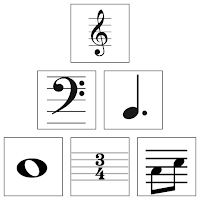Building Blocks : Whole-Steps and Half Steps
What you will learn in this lesson:
- what half-steps and whole-steps are
- how to identify two different types of "2nds"
The system of keys and scales in the western system of music is based on the fact that the notes in the musical alphabet are different distances from one another. Specifically, it's based on the distance between consecutive notes in the musical alphabet. Take a look at the keyboard below. You'll see that there are black keys in between some of the notes in the alphabet, but not between all of them.
We learned in the last lesson that the distance between two consecutive notes in the musical alphabet is called a "2nd" (A to B, E to F, C to D, etc), but as you can see on the keyboard above, some of the 2nds have a black key between them. So now we can see that there are 2nds that have a black key between them, and 2nds that do not have a black key between them.
There are two different names we sometimes use to refer to the two different types of 2nds: whole-steps and half-steps. As you might have guessed, the 2nds with a black key between them are called "whole-steps"' while the 2nds without a black key between them are called "half-steps". Occasionally you may also hear these referred to as "tone" and "semitone", respectively.
So, some adjacent letters are a whole-step apart, while others are only a half-step apart. In order to understand our system of keys and scales, it is ESSENTIAL to know where the whole-steps and half-steps are in the musical alphabet. Fortunately, this is pretty easy because there are only two pairs of notes that are a half-step apart, while the rest are a whole-step apart. The two pairs of notes that are a half-step apart are B to C and E to F.
So, every pair of adjacent notes except B - C and E - F are whole steps, which means:
A to B = whole-step
B to C = half-step
C to D = whole-step
D to E = whole-step
E to F = half-step
F to G = whole-step
G to A = whole-step
Sharps, Flats, and Accidentals >
If you have a question, leave it in the comments below and I'll answer it as soon a s I can.



Comments
Post a Comment
Feel free to ask questions or start a discussion, or leave a suggestion for future articles! Please keep it civil.